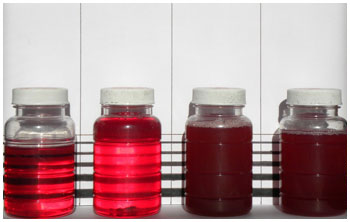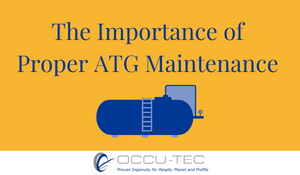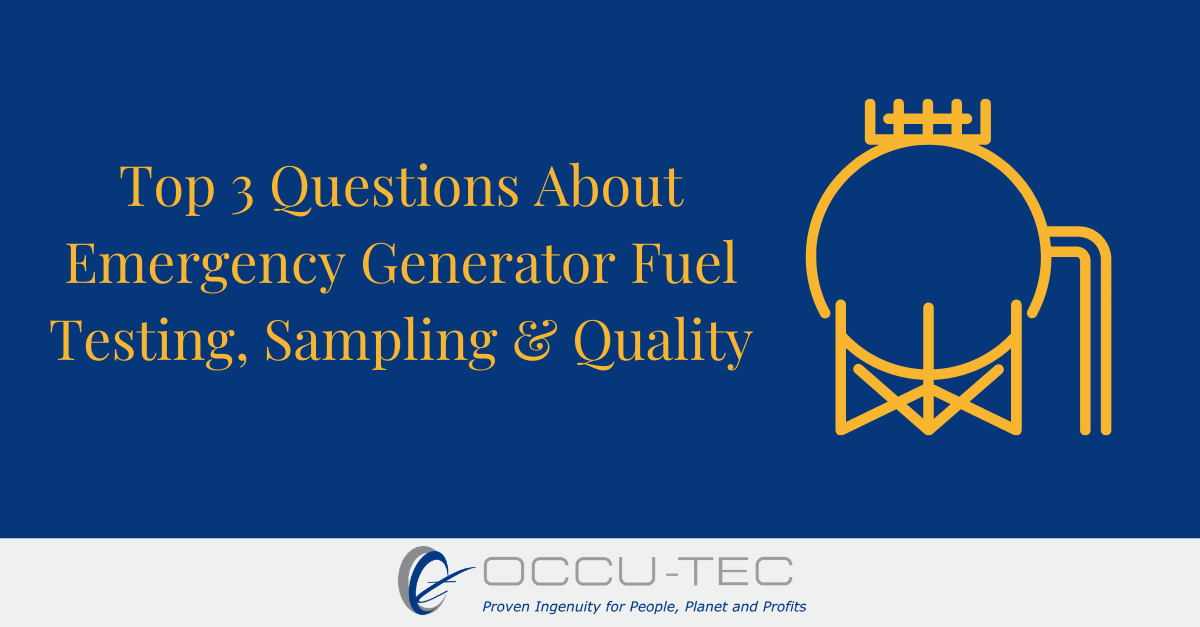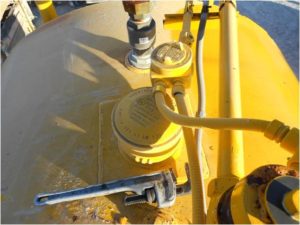2 min read
How Comprehensive Fuel Analysis Can Keep Your Business Running
 Jason Swan, Director of Energy Systems
:
Nov 17, 2021
Jason Swan, Director of Energy Systems
:
Nov 17, 2021

Fuel for Thought Part 2:
We discussed last time that emergency generator owners must have a solid preventative maintenance program that includes routine sampling of their fuel tanks. Fuel samples need to be collected consistently and in a fashion that represents the fuel that is picked up by the pumps feeding your generator or smaller holding tanks (daytanks). A fuel sample collected from the very bottom of your fuel tank, although useful for visual analysis, isn't the sample you necessarily send off for laboratory analysis.
Likewise, a fuel sample collected upstream from generator fuel filters will not represent what is happening inside the fuel tank near your tank's draw (pickup) point. Instead, the sample should be pulled from an interval that best represents where fuel is drawn from your tank. This interval can undoubtedly vary, but it is generally between 1" and 6" from the tank bottom. The actual draw point can be verified via fuel system drawings, interior inspection reports, construction photos, or other means. We generally collect representative fuel samples from 1" -2" off the tank bottom when the draw point is unknown, which is the case most of the time.
Also, if water is already present in the tank bottom, we will collect the sample a minimum of 1" higher than the water level. Remember, we want to get analytical results on the fuel, not the water. Suppose there is water on the tank bottom. In that case, there is already a problem to remedy, so use your sample budget to understand the fuel quality better so you can add the proper treatment into your work plan to fix the water problem.
How do we collect a fuel sample from a particular fuel interval without cross-contaminating it with other fuel in the tank?
Sampling devices known as "bacon bombs" can help you achieve this goal. They remain closed and empty until you reach the interval you want, then open to capture fuel and closed before extracting them from your fuel tank. Another way to extract the sample is by using a hand pump and tubing with some finesse using a tank stick and tubing zip-tied at the inch level from which you want to collect.
We are often asked, "what is a comprehensive fuel analysis"?
Opinions may vary throughout the industry and can also become very situational. Several types of fuel analysis can provide you with detail ranging from general fuel quality to much more detailed analysis, such as proving a fuel's specifications. Striking an economical balance is the key for an entry-level comprehensive analysis suite and might contain the following breakdown:
- ISO Cleanliness (ISO 4406)
- Distillation (D-86)
- Water by Karl Fischer method (D-6304)
- Water & Sediment (D1796)
- API Gravity (D-287)
- Cetane Index (D-976)
- Micro-Organisms (D6469)
We used these same analyses for several years as part of many fuel sampling programs. However, in 2020 an extreme weather event changed how many see fuel quality in the Midwest. When a polar vortex hit the country, temperatures fell well below typical averages for several days. Although low temperatures are nothing abnormal for the Midwest, the duration of those extremely low temperatures lingered much longer than average, which caused some significant generator failures due to fuel gelling conditions. Some customers had laboratory data that provided them some indication of their fuel's cold weather resistance through previous consulting prior to the event.
This data helped them make decisions and generate action plans before fuel system problems surfaced. Unfortunately, other customers were blindsided by generator failure due to fuel flow problems during the event. Therefore, we recommend the following additional tests when providing a baseline comprehensive fuel quality analysis.
- Cloud Point (D7689)
- Cold Filter Plug Point (D6371)




